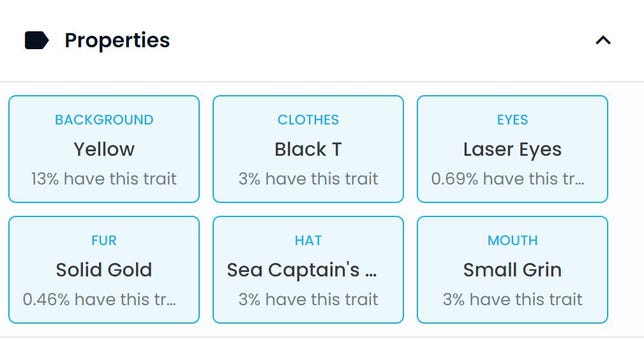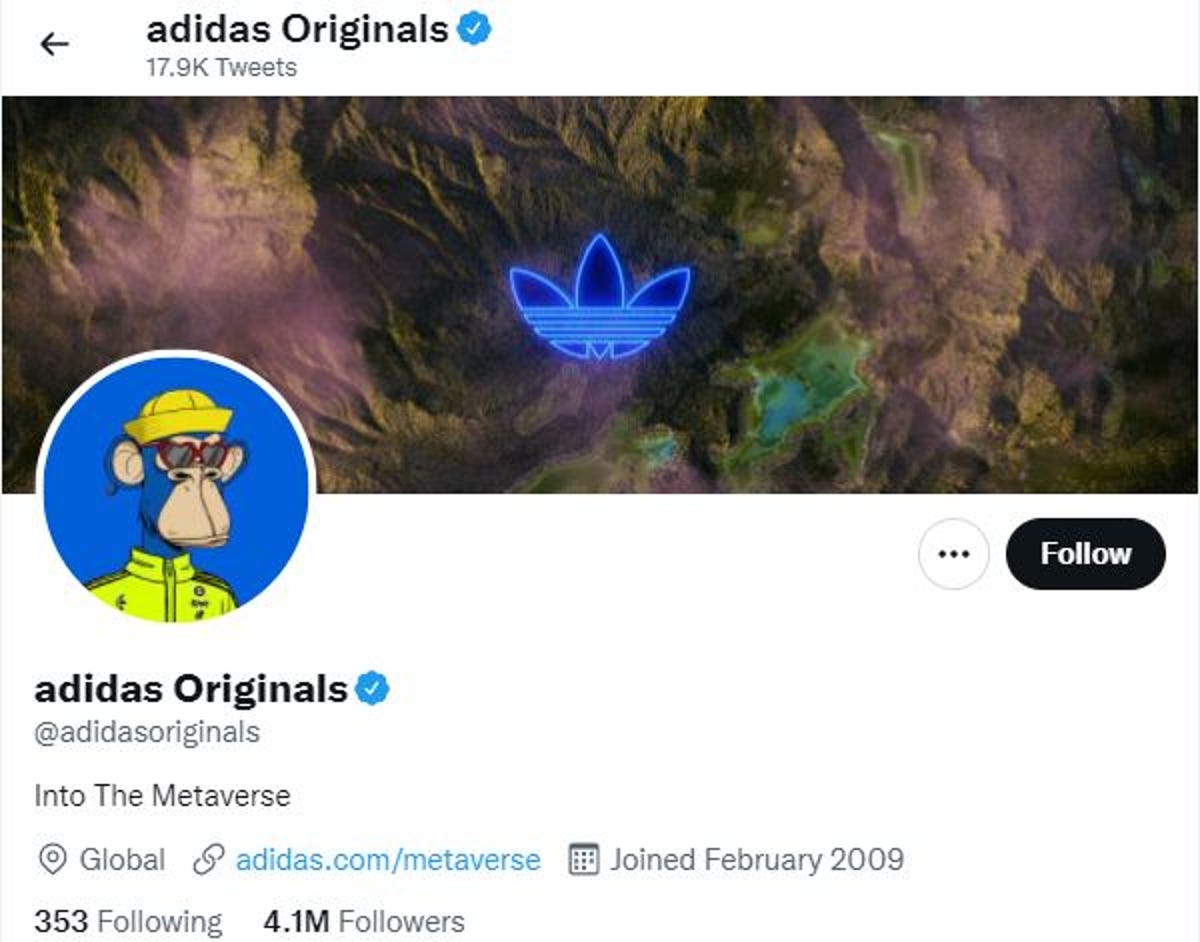Bored Ape Yacht Club NFTs explained
NFTs have been around for five years, but the non-fungible token boom only really began in 2021. It coincided almost perfectly with the launch of the Bored Ape Yacht Club (BAYC), a collection of 10,000 cartoon monkey NFTs are that have come to embody the entire industry. Over the past year, BAYC has become a bellwether for NFTs, just as bitcoin is for the crypto market at large.
When NFTs were at their peak, in April, the entry price for Bored Ape Yacht Club NFTs was $400,000. After crypto crash, caused by the Federal Reserve raising inflation rates to deal with inflation, which has dropped close to $150,000. Far from an all-time high, but crazy considering these NFTs were selling for around $200 each last April.
You’ve probably seen a BAYC, even if you didn’t realize you were looking at one.
Bored Ape owners currently using NFT as a Twitter profile picture include Timbaland (1.6 million followers), Eminem (22.6 million followers) and football player Neyman Jr. (55 million followers). Jimmy Fallon and Paris Hilton are also BAYC holders, discussing their monkeys in a (cringey) Tonight Show segment. Justin Bieber made headlines with the purchase of a Bored Ape Yacht Club NFT for $1.29 million in February.
Yuga Labs, the company behind the NFT collection, has already expanded its ecosystem to include a cryptocurrency (Ape Coin). More importantly, it is developing a “metaverse” MMORPG game called “Otherside”. People who hold Bored Ape NFTs are betting that the brand will completely break through and go mainstream. It has already collaborated with brands such as Adidas and Gucci, and last year a Bored Ape graced the cover of Rolling Stone magazine.
Like everything related to NFTs, the Bored Ape Yacht Club is controversial. Monkeys inspire jealousy among those who own and trade NFT art, but confusion and suspicion among people who don’t. Their value is intrinsically tied to ether, the second largest cryptocurrency. That means NFTs like BAYC are likely to lose their luster if crypto collapses — something critics have been predicting for years.
Here’s what you need to know about the collection.
10 of the 10,000 Bored Ape Yacht Club NFTs. Each has different characteristics, some rarer than others, that make them unique.
Open sea
Why are there 10,000 boring monkeys?
Broadly speaking, there are two types of NFT art. First, you have disposable images that are sold as non-fungible tokens, just like paintings in real life. think about Beeple NFTs which sold at Christie’s for as high as $69 million. Second, you have NFT collections like Bored Ape Yacht Club, which are mostly designed to be used as social media profile pictures. The latter has become the dominant style, where most of the money is spent.
Pioneered by CryptoPunks in 2017, NFT collections are a bit like Pokemon cards. You have a set amount — usually between 5,000 and 10,000 — that all share the same template, but each have different attributes that make them unique. In the case of BAYC, there are 10,000 monkeys, each with varying fur types, facial expressions, clothing, accessories and more. Each attribute has a rarity component, making some much more valuable than others.
These properties are displayed on OpenSea, the main platform where NFTs are traded. On a given NFT’s page, its properties will be listed in addition to the percentage of NFTs in the collection that share the property. Generally, anything below 1% is considered rare. For example, out of 10,000 monkeys, only 46 have solid gold fur, which makes them particularly valuable.

Each NFT has properties that are ranked by rarity, making some more valuable than others.
Open sea
As mentioned, the “floor price” for the project – what you pay for a monkey with common traits – is currently around $150,000 (85 Ether). Monkeys with the golden fur trait are rare, and therefore sell for much more. One sold in January for $1.3 million. Another with golden fur and laser eyes, two under 1% traits, went for $3 million.
BAYC is the largest NFT project of its kind, recently eclipsing CryptoPunks, which is credited as the first “pfp” (profile picture) collections. Other notable sets includes CyberKongz, Doodles and Cool Cats.
What makes Bored Ape Yacht Club valuable?
This is a complicated question. The short answer is that they are status symbols, and like all status symbols, their value comes from perception and branding rather than utility. Just as a CEO might try to communicate business acumen with a Rolex or a luxury suit, people who trade NFTs demonstrate their success with a Bored Ape Yacht Club NFT. Their argument is that NFTs are better status symbols than real-world objects, since when used as profile pictures, they can be seen by millions of people on Twitter and Instagram.
Let’s start with the beginning. Bored Ape Yacht Club was launched last April. It took 12 hours for all 10,000 to sell out at a price of $190 (0.08 Ether). The price of Bored Ape NFTs rose steadily until July, when they increased dramatically and the collection became a blue-chip set.
What makes an NFT collection successful is highly subjective. Broadly, it’s a mix of four things: Influencer or celebrity engagement, mainstream potential, member utility, and community appeal.
The first and second are obvious. When famous people own an NFT, others also want to own one. When celebrities like Jimmy Fallon and Justin Bieber bought into Bored Ape, it created a surge in sales and hype – and hype is what the NFT market is all about. People who buy into BAYC today, at a steep price of over $150,000, are likely to believe that the brand could one day grace more than celebrity social media accounts: Netflix shows, popular games and Hollywood movies are the target.
Third, utility. Most NFT projects claim to offer a tool of some kind, meaning it does something other than act as a profile picture. It could be access to games to earn money or the ability to bet an NFT in exchange for an associated cryptocurrency.
Bored Ape Yacht Club has done a few things to keep owners interested. First, it created the Bored Ape Kennel Club, giving owners the opportunity to “adopt” a dog NFT with characteristics that mimic those of Bored Apes. Another freebie arrived in August 2021: Digital ampoules of mutant serum. Owners can mix Bored Ape with the serum to create a Mutant Ape Yacht Club NFT (see below).
The arrival of this second collection last August was when the Bored Ape brand really emerged. Bored Ape Yacht Club was seen as doing innovative things with NFT technology, and at the same time, a huge amount of money entered the space that month. the premiere NFT brand.
Both Kennel Club and Mutant Ape NFTs are now overselling. The Mutant Ape Yacht Club entry point is around $30,000, while the Bored Ape Kennel Clubs sell for about half that. (Remember these were free to BAYC holders.)
A boring monkey and its mutant monkey counterpart.
Yuga Labs
Last but not least is the community that is built around a collection. NFTs act as membership cards for holder groups. The more valuable people find belonging to that community, the less they will sell NFT. The Bored Ape Yacht Club has organized meetings in New York and California, and there have also been Bored Ape meetings in Hong Kong and the UK. In June, BAYC holders were treated to “Ape Fest,” a festival that included performances from Eminem, Snoop Dogg, LCD Soundsystem and Amy Schumer.
But “community value” also extends to economic self-interest. The higher the floor price of a collection, the more crypto-rich traders you can expect to be holders. These savvy investors trade information within locked Discord groups, providing valuable (sometimes insanely valuable) tips to each other. Sell your NFT and you will no longer be privy to such tips.
Eminem is the latest celebrity to display a Bored Ape Yacht Club NFT as a social media profile picture.
Twitter
Who is behind Bored Ape Yacht Club?
Bored Ape Yacht Club was developed by Yuga Labs. At the time, Yuga Labs consisted of four people, all of whom went by pseudonyms. It’s Gordon Goner and Gargamel, who are the two co-founders, and two friends who helped on the development side, No Sass and Emperor Tomato Ketchup.
All four went solely by their pseudonyms until February, when BuzzFeed reported the identities of Gordon Goner and Gargamel. Gargamel is Greg Solano, an author and book critic, and Gordon Goner is 35-year-old Wylie Aronow. Both went on to post pictures of themselves on Twitter with their Bored Apes. After that, both Emperor Tomato Ketchup and Sass “doxxed” themselves — that is, revealed their identities — by doing the same thing.
The art itself was created by freelance artist Seneca, who is not part of Yuga Labs.
What will be next?
Yuga Labs has big plans for the Bored Ape Yacht Club brand, plans that are both on and off the chain. (That is, both on the blockchain and in the real world.)
Start with more blockchain stuff. In March, Yuga Labs released Ape Coin, its own cryptocurrency. All Bored Ape holders were dropped just over 10,000 Ape Coins at launch, worth around $100,000 at the time (now around $70,000). Ape Coin will be the primary currency in Otherside, metaverse Yuga Labs is building.
Metaverses are large, virtual spaces shared by hundreds or thousands of people at a time. They have been around for a long time, think Second Life or even Fortnite. Blockchain-integrated metaverses are different only in the sense that the land, building and objects in the world are owned by users as NFTs. Yuga Labs has already sold land for the metaverse, making over $300 million in just a few hours of sales.
Out in the physical world, Bored Apes integrates itself into fashion. Adidas launched its first NFT project, Into The Metaverse, in collaboration with several NFT brands, Bored Ape Yacht Club boss among them. Collaboration between Adidas and BAYC on both virtual and physical clothing is coming soon.

Adidas is also a member of the Bored Ape Yacht Club.
Twitter
The Bored Ape Yacht Club brand has appeared in other industries as well. Literally when it comes to food: A Los Angeles pop-up restaurant recently turned into a permanent burger spot. In January, a mobile game, Apes vs. Mutants, launched on both the App Store and Google’s Play Store. (Reviews have been unkind.) Another mobile game is in production, slated for Q2. Bored Ape figures by Super Plastic are also on the way.
More unusual, however, is what people do with their monkeys. Owning a Bored Ape NFT gives you full commercial rights to it, and holders take advantage of it in some creative ways. A Bored Ape owner create a Twitter account for his monkey where he created a backstory and turned him into Jenkins, a valet who works for the Yacht Club. Jenkins is now signed to a real agency, and has a biography written by New York Times bestseller Neil Strauss. Universal Music Group has invested by signing a band consisting of three Bored Apes and one Mutant Ape.
You might think NFTs are stupid—and terrible for the environment—but don’t expect Bored Apes to go away anytime soon.


